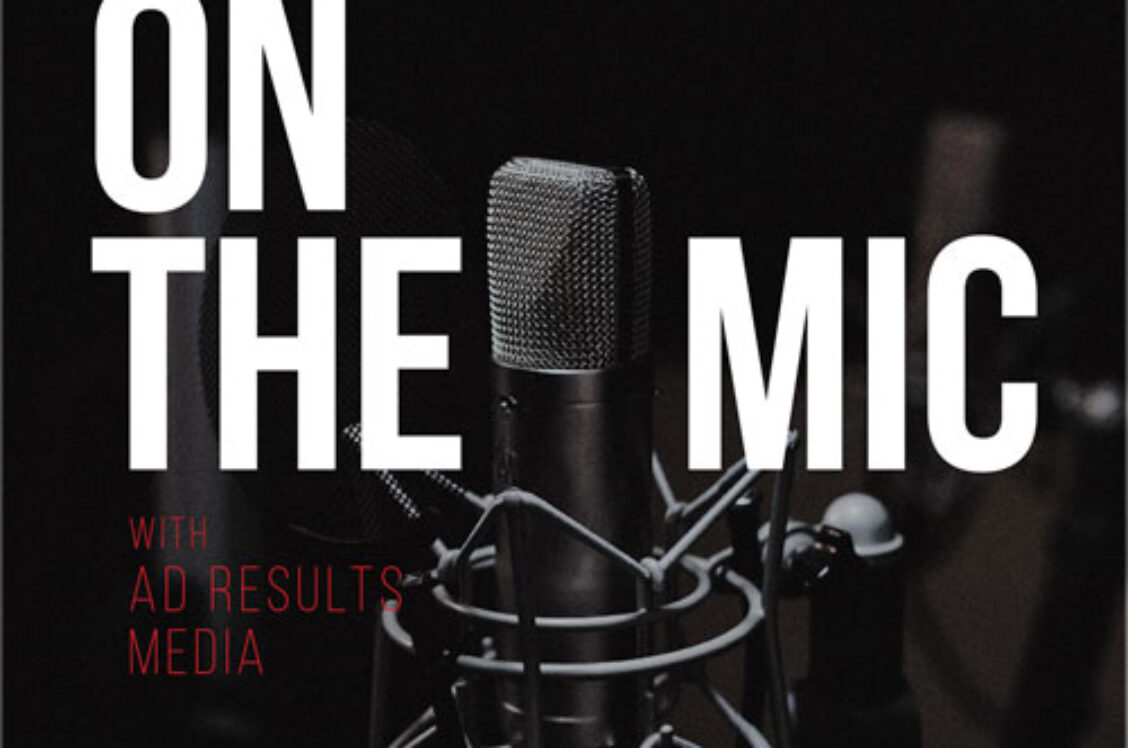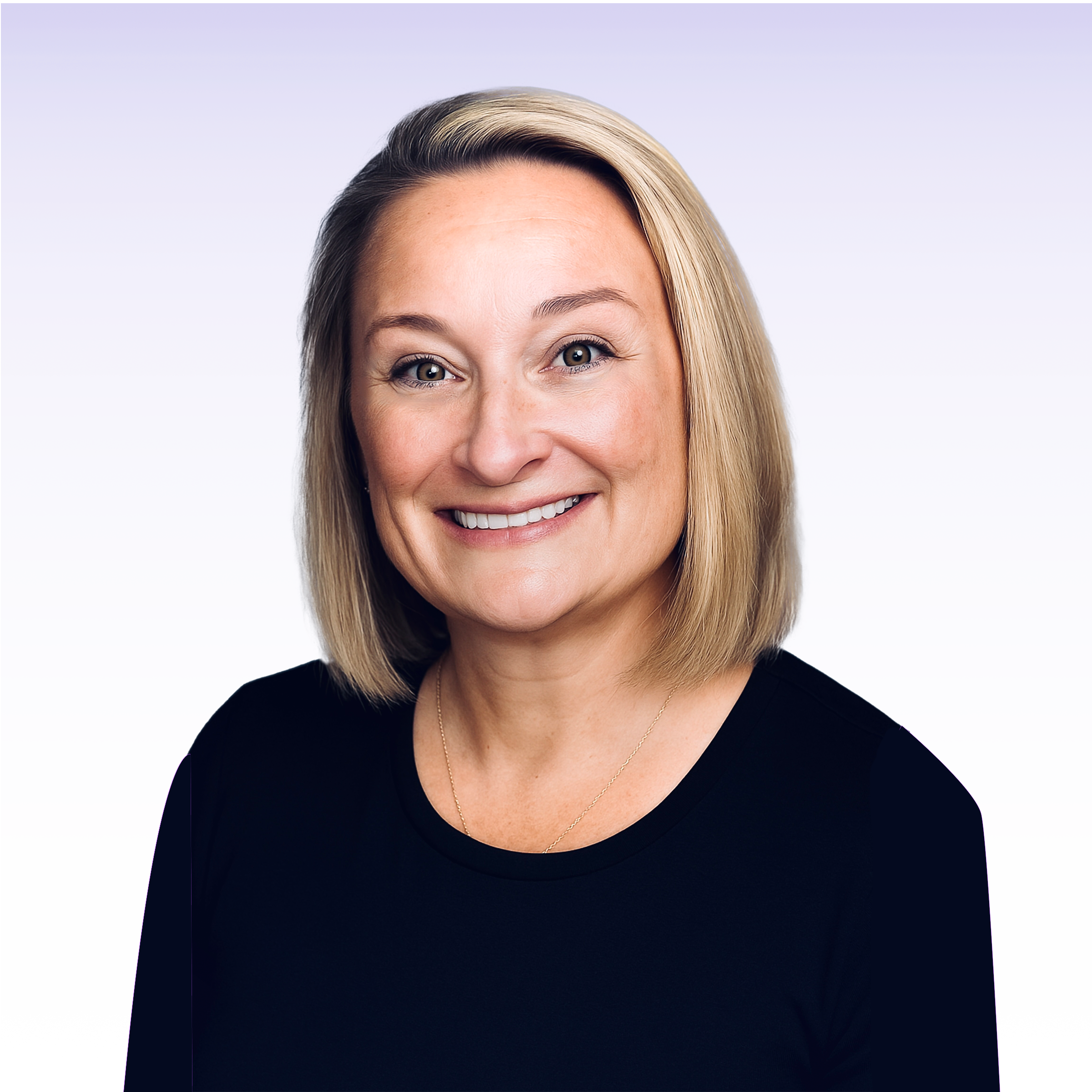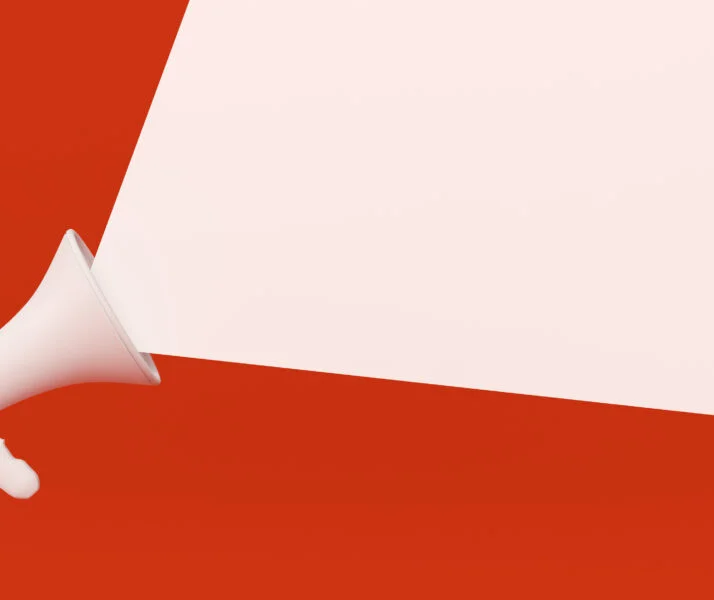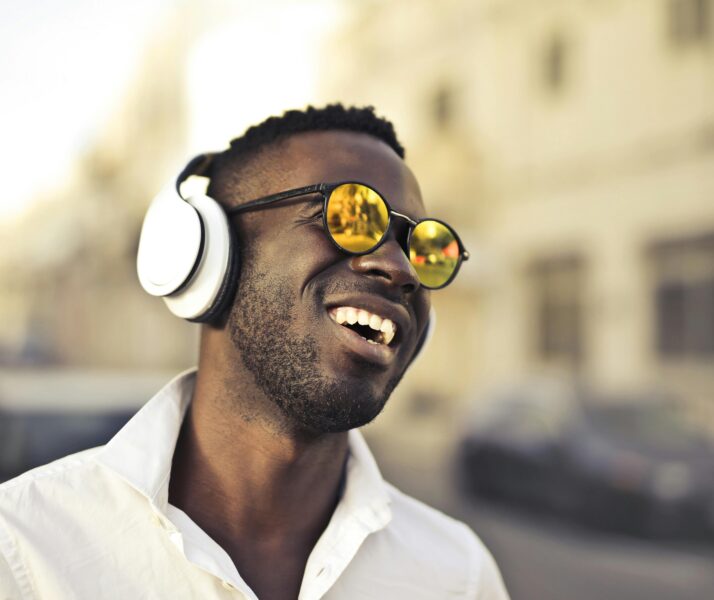
So you’ve planned, researched, written, reworked, practiced, and recorded. The final steps to perfecting your podcast now lie in editing and mixing. In episode 11 of On the Mic with Ad Results Media, hosts Nathan Spell and Lindsay Boyd sit down with our editor, Freddy Trejo, to discuss his editing process and to experience the auditory differences involved.
Be sure to subscribe to the “On the Mic with Ad Results Media” podcast through iTunes. It’s a podcast about the business of podcasting and audio advertising. We aim to educate, enlighten and push the industry forward.
Podcast Transcript
(0s):
Well, listening to a podcast. Do you ever wonder how many times it took to get it? Right? Everything sounds clean. The volume is perfect and the show has a good flow to it. This could be the result of a good performer, but everyone makes mistakes. That is when an editor comes in from books to podcast and editor is there to cut out all the fluff and make sure that the story that is being told makes sense. In this episode of, On the Mic with Ad Results, Media Lindsay, Boyd, Nathan, the Spell and myself, Freddy, to go home. Talk about the process that I go through and Editing this Podcast. So let’s get started. That’s the great thing about Sam’s dot com. They grow with you as much fun as I had. I couldn’t wait to get back to my sleep number bed.
(41s):
I love my third love bras. They’re hands down the most comfortable bras I’ve ever owned. I love making blue apron and the love it. It’s my me time.
Core Principles of Podcast Editing: Setup and Monitoring
Freddie, thank you For taking the time to answer some questions that Nathan and I have, we spend so much time in front of the Mic and we don’t really get to see a lot of the editing process. So I kind of just want to jump in. And why don’t you tell us a little bit about what defines Editing, Editing to me? He is finding a story within the raw audio. The whole goal for me is to make sure that I’m adding and removing parts to make everything more cohesive, whatever the story is, it could be a crime podcasts and educational podcast and Ad podcasts from beginning to end.
(1m 31s):
It all makes sense. I think that’s really interesting to think of Editing is storytelling from that perspective. That’s really cool. It helps a lot because it makes you think in different ways because you look at something and it’s not just a, B C one, two, three. You’re trying to find ways to connect everything together. So how did you start? Like where, where does that process really begin? And so the editing process actually starts before the Editing. It starts at recording depending on how you are capturing in your audio. It could be a USB Mic, a interface connecting to a XLR microphone. You want to make sure that the gain or the sensitivity of the Mic for everyone who is on the Podcast is equal.
(2m 12s):
You don’t want something to be peeking. And when I say peaking, it’s basically distorting the Audio. You want to make sure that everyone stays and the green, some interfaces will have a screen or some way of monitoring your Audio. If everything is in the green, perfect, it’s, it’s, it’s pleasant. It’s not going to be distorted. Then it goes into yellow. That’s your, okay, its kind of loud, but you can still work with it. The red, when it’s peaking, when it’s distorted that audio that is recorded in that section, can’t be used, quiet. Audio can be edited. The started Audio can not, you can’t fix the store and Audio. That’s just how it is. It’s just distorted. You want to make sure that that doesn’t happen.
(2m 52s):
So when you are working with us on, On the Mic, what are you monitoring to make sure that our levels are even when We, we started recording a podcast, I always make sure that I am in there. The idea is that I want to make sure that I’m sitting there and setting everything up and looking at my software, my editing software, which I use his audition. And when I’m recording, y’all there is a meter On edition that shows me how everyone is sounding and an overall meter that shows how everybody together sounds. So I have individual meters for you, Lindsay and Nathan. And then I have an overall meter for the whole show. And I make sure that if the overall meter is red, I have to go and change the game.
(3m 35s):
And if say, Lindsay, you’ll say something, but it’s being picked up on Nathan’s Mic. I make sure I try to reposition the mic. So it doesn’t pick up what you’re saying. So I won’t have this weird echo effect. I always, always, always, always, always recommend people who are going to be Editing to listen to the podcast as it’s being recorded, because you are there to make any adjustments on the fly to make your future work easier. So it sounds like there are multiple ways that folks can kind of get a handle on levels, whether it be through a program like audition or I’ve never used it, but I’ve heard other people use audacity is that, And he’s a really good free option to use. It’s not user-friendly it’s, it’s, it’s it. You can use it, you can record and that’s it.
(4m 16s):
But if you want to go more into details and, and Editing, it’s, it’s a lot more difficult to do it. I used to use all Udacity because it was easy. I record what I need to do. And then I would actually export that Audio into auditions and edit there because it was just easy to press go and not even worry about it. But when it comes to the nitty-gritty of Editing, I do everything on audition. Now, now that we have a better interface, the, was it premixed six that we use. And, and that, one’s interesting because it’s a field recorder and it has the screen on it. So everything that I need is on there too. So if I need to monitor everything, I can just look at the screen and know that we’re okay. But since it also connects to the computer, I have two types of monitoring. I have one of my interface and I have one in the computer.
(4m 56s):
So that’s one thing you always have to make sure to. You want to test the audio because your interface might say one thing, because it’s picking it up directly from the mix, but your computer, your all Udacity or your audition might say another because it’s picking up straight from the interface. So it’s one of those things you always have to make sure before you say we’re done, you want to make sure that everything sounds, I feel like that was something that I kind of ran into because the pre-mix that we use at the studio is part of what I snagged and brought home with me. So I could record from home. And I know that if it’s turned up too loud, it’ll pick up everything and then you’ll just have this like buzz in the background. But it’s not something that I necessarily see on audition when I’m recording Another thing, Lindsay, you brought up a few episodes ago.
(5m 43s):
One of the most important things to have our headphones and an editor’s best friend, our headphones, if you have cheap quality headphones, it’s okay to start off with it, but you probably won’t here. The full dynamic range, the lows, the highs, the base, the trouble, the mids, these things that eventually as you go on into Editing and, and dig deeper and experiment more, you become more apparent and with good quality headphones. So you can automatically tell, Oh, Hey, I hear buzzing. Where’s that buzzing coming from compared to Walmart headphones where you put them in. And you’re like, I hear the buzzing all the time. I don’t know where that buzzing is coming from. I think if the headphones, Right? Right. Quality, quality cables, quality headphones. When you approach Editing Audi, you approach that process.
Workflow Efficiency: Grouping Tracks and Volume Balancing
(6m 26s):
The idea of having the roadmap is really important because it allows you to make sure that you have an idea of how the podcast is going to pan out. You want to make sure from the beginning to end, you know how this is going to work, you know, from beginning that this is what they’re going to talk about. This is where they’re going to lead off to. And this is how they’re going to end having that roadmap. As an editor allows you to know where you’re going to do your cuts. Once you’ve gotten your audio and you’ve uploaded them into, for me, it’s audition. I always use the multi-track view because you’re not just editing one thing. You’re Editing multiple things at the same time. So once you’ve imported your audio into the multi-track view, you want to make sure the first thing you do before anything is that you group those tracks by grouping these tracks right-click group tracks.
(7m 9s):
You allow addition to say, these two tracks are now together and they’re linked together. They’re grouped together. And anytime you do an edit to one track, it does. So the other ones, this is where you start cutting. This is where you start shortening. This is where you start listening for breasts or ooze for us, for the small little ticks that we as humans have. And that’s where you start cutting it. But if you don’t group them, if you only edit one track at a time, you have to make sure that these other tracks are being edited in the same time. So let’s say Lindsay, in 10 seconds, when you say something wrong and you want me to cut it, I’ll cut it. But if I don’t group those two tracks together, you are tracking Nathan this track, right? And now I have to go to the Nathan, this track cut 10 seconds in and I have to do that forever. Now don’t do that group.
(7m 50s):
Them, cut them together, edit them together, make your life easier. So it sounds like if you don’t group your tracks, you’re basically doing double, maybe even triple work, depending on how many microphones you recorded. Right? And if I edit something on Nathan district, after our date, at your track, I have to go back to your track and edit all the Nathan edits as well. Group your tracks, make your life easier group and treat them as one track. Once you’ve already grouped your Audio. Once you’ve already edited and cut down and follow your roadmap, this is a time where you want to make sure that your levels, how everything sounds, how loud everything it sounds is equal. Like you were saying, Lindsay, and now that we’re recording in three different locations, three different interfaces, three different mikes. Our volumes won’t be the same.
(8m 30s):
So it is up to me to make sure that once I have everything in the multi-track view and it gives me this nice little meter, a game meter and Audio Media, the mixer that shows each tracks volume, and then the master tracks overall volume. Oh, that’s super helpful. It is because I can now see the master track and say, okay, I wanted to make sure that it’s not going to go over negative nine decibels. So I’ll have that. That’s my goal. I’m making sure nothing goes over that and I’ll play through the podcast. And if I see something that’s a Lindsay, you say something and it makes us all laugh. And we start going over that line that I’ve put that threshold that I’ve put, I go into each of our own individual tracks and I lower and make sure that it’s not crossing that line. This is takes a little bit more time because you have to listen to everything first and make sure nothing’s too loud.
(9m 15s):
Once you start getting better at it, you can just look at the wave forms and just know automatically, okay, that one’s too loud, that wants to low and you can bring it up, bring it down manually on your own. It’s very important to make sure that the final volume mix is well. Yeah, it’s even in finished. You just want to make sure that’s fine because you don’t want to listen to it. And next, you know, 10 minutes into a podcast it’s super loud on one end and are quiet on the next. And you just don’t, We’ve probably all experienced at one point or another with a podcast that we’ve tried to listen to. I know that I have for one host, I’ll just be totally blown out. And then another I’m you know, having to turn up the volume just to hear it in the same room, like let’s yeah.
(9m 56s):
Podcast. It’s especially frustrating on road trips And you know, when you’re driving and one guy you’ve got and he’s great levels. Awesome. Can totally hear his side of the story. And then his co-host is just like That. Or they come in and you can hear Good to hear your air conditioning over the, the audio. And sometimes you have people who just come in way too hot and you’re just sitting there. Everything sounds, even in that one, person’s like, Hey. And you’re like, Oh my God, that’s scary to me. And then you have headphones. Yes. With your headphones. It’s the scariest thing. Cause he’ll be sitting there listening or whatever you’re doing.
(10m 37s):
And so that one person, that one section that you forget, and he was just blasting you freak out once you have your volume down and everything sounds and looks because you also using that mixer to make sure everything is underneath that threshold that you decided, this is where your detailed cuts have to come in. You already did your main cuts of like how you want things to go through the podcasts, how the body has to get to a, to Z. Now it’s going in and cutting down breaths, cutting down the small things that you won’t pick up at first, when your doing your major cuts, you won’t listen to it’s fine. But these are the things that really add time to your podcasts. Really add a mess to your podcasts. It sounds unpolished, right? You want to Polish it up.
(11m 17s):
This is where you start going in there and giving some elbow grease and making sure everything’s clean. And everything sounds even once you’ve done a cut that may require you to cut out a word, whatever, go back and listen to it. Go back 10 seconds. Listen to it. Does this sound natural? Does it sound like that person? Didn’t say close your eyes, go back and listen to it. Did you, the editor catch the cut if you didn’t catch it. And that means your listener won’t hear it because they don’t know what they’re looking for, but you do. That’s. That’s how I always do it. If you ever walk into the editing room, you’ll see me with my head down eyes closed. Just listening to something over and over again, because I want to make sure that cut that I did is not at all. Once. It’s not noticeable. I go to my next cut. Don’t be scared of cutting content out.
(11m 58s):
Sometimes a scene is really good. Sometimes a conversation is really good, but it doesn’t Ad to the whole. It can be just like a tangent and you just have to cut that out. Sometimes it can be something that was repeated. I do that a lot. I repeat. And I don’t mean to, but with the power of Editing, no one will know that I repeated myself two times, three times, cut them all out. Have it once. Perfect. This is where Mixing comes in. This is where you go in the equalizer. Do you need a dresser? Does this section? You need a low pass and you need the high pass, a low cut high cut. What does that all mean?
Advanced Techniques: Equalization and Audio Effects
The one thing I’m going to say for everyone as an editor, learn how to use your equalizer. Your equalizer is your best friend. If you’re doing a podcast, similar to what we’re doing right now, three different people, three different situations, three different microbes, everything different.
(12m 41s):
This equalizer. Well does what’s the name says it equalizes everything. One of the things that I have learned through Editing is that I can explain to you the numbers I can explain to you what it means. I can use tinny. I can use Basey all of these terms, all this jargon, but it won’t stick until you actually experiment by going in saying some silly phrase recorded and then edit with your IQ, listen to each frequency. What do they do? How do they change the sound you have to experiment, experiment, experiment, experiment. It’s the only way you can actually learn what each slider does. You have to listen to the changes you have to put out your ears to the test.
(13m 26s):
In this section of the podcast, I’m going to do some edits, do an audio sample. I’m going to showcase the raw audio. First. She sells sea shells by the seashore. The shells she sells are seashells. I’m sure. Now we’re going to add some compression. This brings up all the quiet parts and brings down all the loud parts. She sells sea shells by the sea shore. The shells she sells are seashells. I’m sure. Now we’re going to use a DSR on the raw audio. This brings down the harsh S sounds. She sells sea shells by the seashore. The shells she sells are seashells. I’m sure this next edit is going to be using a high pass or a low cut.
(14m 9s):
This allows the high end frequencies of an Audio to come through. She sells sea shells by the seashore. The shells she sells are seashells. I’m sure by contrast, a low pass high cut filter brings out the lower frequencies of an Audio. She sells sea shells by the seashore, the shelf, she fells our seashells I’m sure. And for the last example, this Audio has gone through the full editing process. She sells sea shells by the sea shore. The shells she sells are seashells. I’m sure with her, those examples, you have a better understanding how those filters and modifications work at this point.
Final Quality Assurance and Collaborative Review
(14m 50s):
You’re probably thinking, okay, I’ve done all of now. What you export it, you listen to it and you use your ears and say, is that good? Or is that not good? And once you’ve done that, share it with someone else, Lindsay, you know that every time I finished editing something, I send it to you. And they, you know, when I’ve finished editing, I send it to you because there’s a point of editing where you would just have tunnel vision or tunnel hearing, whatever you want to call it, but you could fix state and you just don’t worry about anything else. You get fixated to the point where everything sounds okay. And sometimes it doesn’t just because you think it sounds good. It might not have the extra pair of ears listening to it because at the end of the day, you want to make sure that after Editing, after listening, after doing all these things, that the story that is being told Sounds as best.
(15m 33s):
If you enjoyed this episode, be sure to subscribe for updates on future episodes and leave us a comment with your feedback, questions, or ideas for future segments. If you would like more info on Ad Results Media and what we do, please visit us online at Ad Results. Media dot com. This podcast is an Ad Results, Media production.


